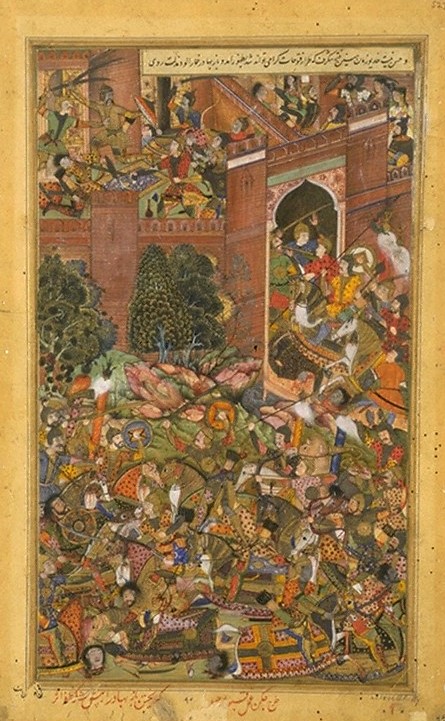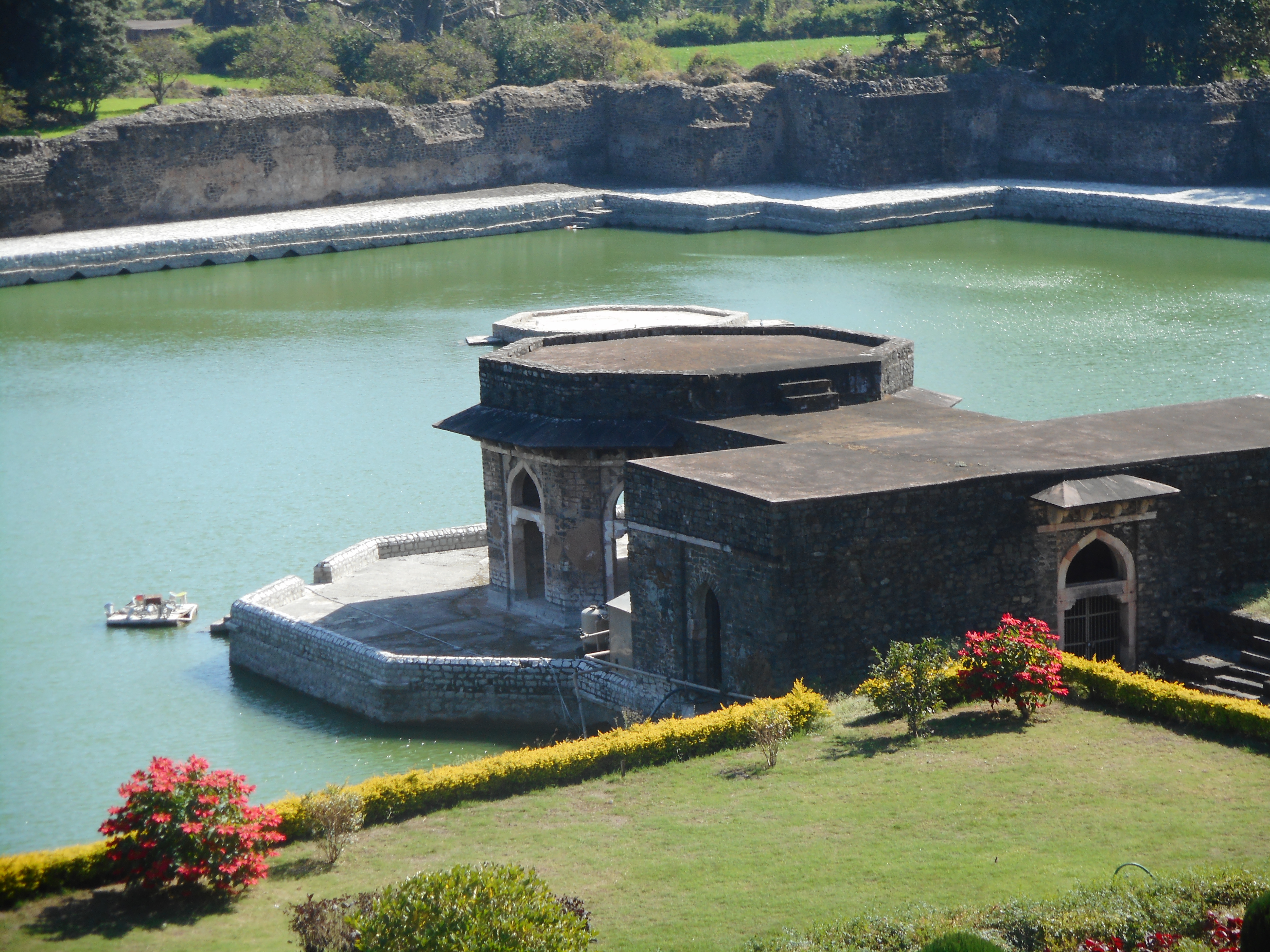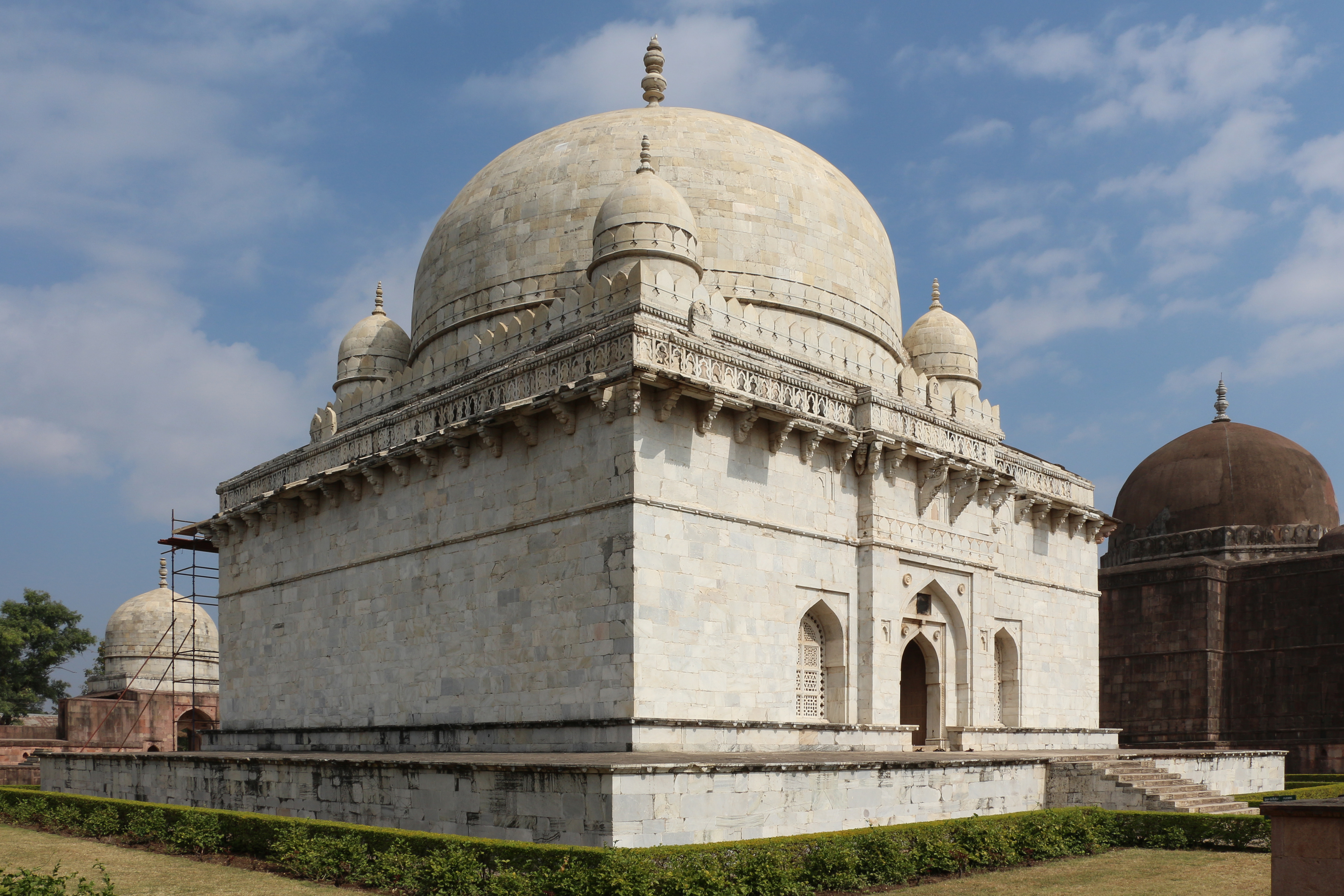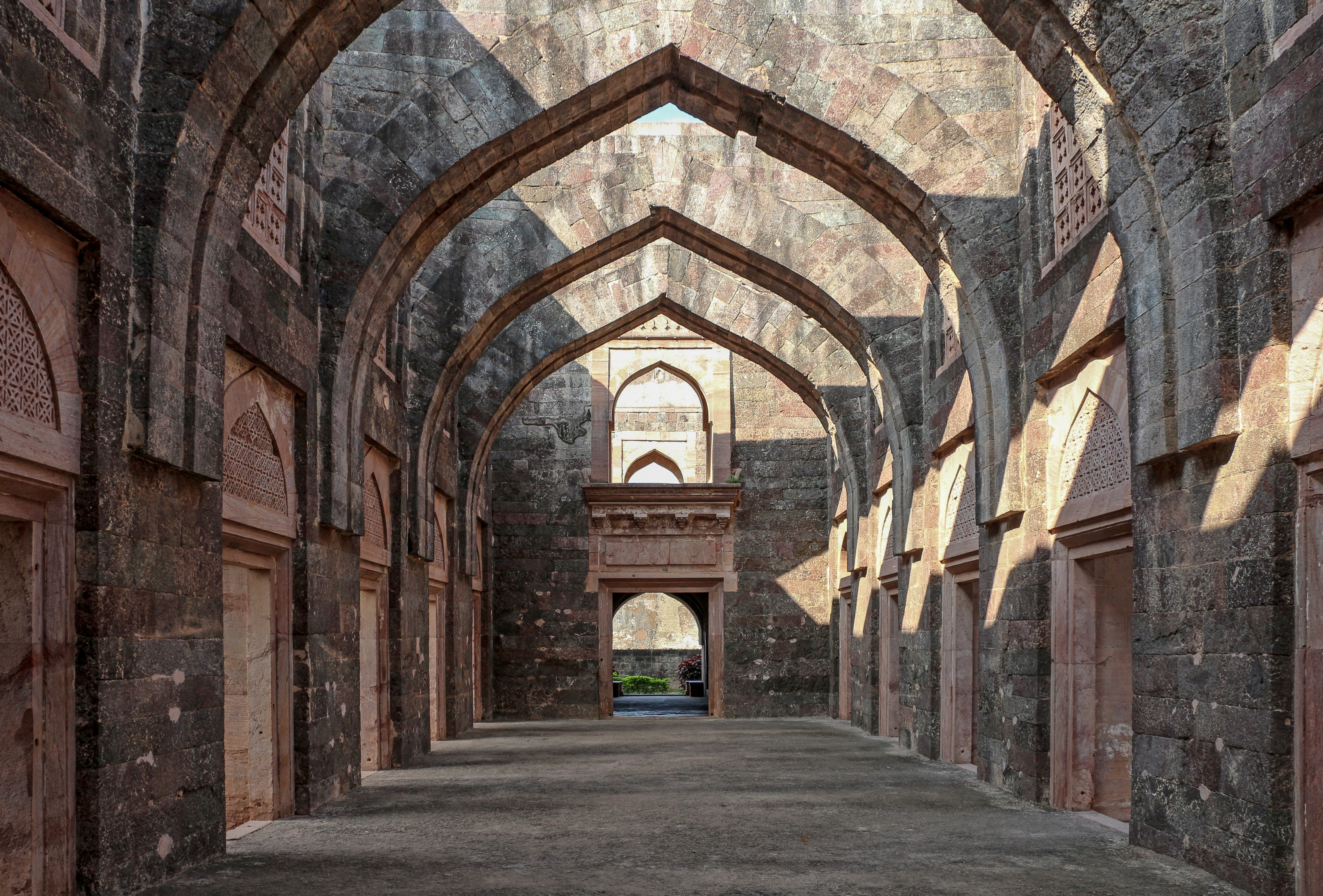Mandu, Madhya Pradesh on:
[Wikipedia]
[Google]
[Amazon]
Mandu or Mandavgad is an ancient city in the present-day Mandav area of the









 An inscription discovered from Talanpur (around 100 km from Mandu) states that a merchant named Chandra Simha installed a statue in a temple of Parshvanatha located in the Mandapa Durg. While "Durg" means "Fort", the word "Mandu" is a
An inscription discovered from Talanpur (around 100 km from Mandu) states that a merchant named Chandra Simha installed a statue in a temple of Parshvanatha located in the Mandapa Durg. While "Durg" means "Fort", the word "Mandu" is a 
File:Palace at mandu.jpg, Palace at Mandu
File:PalaceAtMandu.jpg, Palace at Mandu
File:Palace at Mandu1.jpg, Palace at Mandu
File:Rupmati palace, Mandav.jpg, Rupmati palace, Mandav
File:Rupmati palace, Mandu.jpg, Rupmati palace, Mandu
File:Rupmati palace, Mandu 01.jpg, Rupmati palace, Mandu
File:Asharfi Mahal-Mandu-Madhya Pradesh-DSC001.jpg, Asharfi Mahal-Mandu-Madhya Pradesh
File:Asharfi Mahal-Mandu-Madhya Pradesh-DSC003.jpg, Asharfi Mahal-Mandu-Madhya Pradesh
Mandu - A Historical Tourist Destination in Madhya Pradesh
Mandu - A Mesmerising Heritage Experience
{{Authority control Forts in Madhya Pradesh Tourist attractions in Dhar district Cities and towns in Dhar district Cities in Malwa Former populated places in India Former capital cities in India Dhar district Ghost towns in India Ruins in India
Dhar district
Dhar district is a district of Madhya Pradesh state in central India. The historic town of Dhar is administrative headquarters of the district.
The district has an area 8,153 km2. It is bounded by the districts of Ratlam to the north, Ujja ...
. It is located in the Malwa
Malwa is a historical region of west-central India occupying a plateau of volcanic origin. Geologically, the Malwa Plateau generally refers to the volcanic upland north of the Vindhya Range. Politically and administratively, it is also syn ...
and Nimar
Nimar is the southwestern region of Madhya Pradesh state in west-central India. This region has sub-regions which include Nimad, Khandya and Bhuwana.
The region lies south of the Vindhya Range, and consists of two portions of the Narmada and ...
region of western Madhya Pradesh
Madhya Pradesh (, ; meaning 'central province') is a state in central India. Its capital is Bhopal, and the largest city is Indore, with Jabalpur, Ujjain, Gwalior, Sagar, and Rewa being the other major cities. Madhya Pradesh is the seco ...
, India, at 35 km from Dhar
Dhar is a city located in Dhar district of the Malwa region in the state of Madhya Pradesh, India. The city is the administrative headquarters of the Dhar district. Before Indian independence from Great Britain, it was the capital of the Dh ...
city. In the 11th century, Mandu was the sub division of the Tarangagadh or Taranga kingdom. This fortress town on a rocky outcrop about from Indore
Indore () is the largest and most populous city in the Indian state of Madhya Pradesh. It serves as the headquarters of both Indore District and Indore Division. It is also considered as an education hub of the state and is the only city to ...
is celebrated for its architecture
Architecture is the art and technique of designing and building, as distinguished from the skills associated with construction. It is both the process and the product of sketching, conceiving, planning, designing, and constructing building ...
.
History









 An inscription discovered from Talanpur (around 100 km from Mandu) states that a merchant named Chandra Simha installed a statue in a temple of Parshvanatha located in the Mandapa Durg. While "Durg" means "Fort", the word "Mandu" is a
An inscription discovered from Talanpur (around 100 km from Mandu) states that a merchant named Chandra Simha installed a statue in a temple of Parshvanatha located in the Mandapa Durg. While "Durg" means "Fort", the word "Mandu" is a Prakrit
The Prakrits (; sa, prākṛta; psu, 𑀧𑀸𑀉𑀤, ; pka, ) are a group of vernacular Middle Indo-Aryan languages that were used in the Indian subcontinent from around the 3rd century BCE to the 8th century CE. The term Prakrit is usu ...
corruption of "''mandapa''", meaning "hall, temple". The inscription is dated 612 VS (555 CE), which indicates that Mandu was a flourishing town in 6th century.
Mandu gained prominence in 10th and 11th century under the Paramaras. The town of Mandu, situated at an elevation of 633 metres (2,079 feet), is perched on the Vindhya Range extending for while overlooking the plateau of Malwa to the north and the valley of the Narmada River to the south which acted as natural defences for the fort-capital the Paramaras. As "Mandapa-Durga", Mandu is mentioned as the royal residence in the inscriptions of the Paramara kings starting from Jayavarman II
Jayavarman II ( km, ជ័យវរ្ម័នទី២; c. 770 – 850) (reigned c. 802–850) was a Khmer prince who founded and became the ruler of the Khmer Empire (Cambodia) after unifying the Khmer civilization. The Khmer Empire was the ...
. It is possible that Jayavarman or his predecessor Jaitugi moved from the traditional Paramara capital Dhara to Mandu, because of attacks from the neighbouring kingdoms. Balban
Ghiyas ud din Balban (1216–1287, reigned: 1266–1287) ( ur, ); (Hindi: ग़ियास उद-दीन बलबन); (IAST: ''Ghiyās ud-Dīn Balban'') was the ninth sultan of the Mamluk dynasty of Delhi.
Ghiyas ud Din was the ''rege ...
, the general of the Delhi
Delhi, officially the National Capital Territory (NCT) of Delhi, is a city and a union territory of India containing New Delhi, the capital of India. Straddling the Yamuna river, primarily its western or right bank, Delhi shares borders ...
's Sultan Nasir-ud-din, had reached the northern frontier of the Paramara territory by this time. Around the same time, the Paramaras also faced attacks from the Yadava king Krishna of Deogiri and the Vaghela king Visaladeva of Gujarat
Gujarat (, ) is a state along the western coast of India. Its coastline of about is the longest in the country, most of which lies on the Kathiawar peninsula. Gujarat is the fifth-largest Indian state by area, covering some ; and the ninth ...
. Compared to Dhara, which is located in the plains, the hilly area of Mandu would have offered a better defensive position.
In 1305, the Muslim Sultan of Delhi
The following list of Indian monarchs is one of several lists of incumbents. It includes those said to have ruled a portion of the Indian subcontinent, including Sri Lanka.
The earliest Indian rulers are known from epigraphical sources fou ...
Alauddin Khalji
Alaud-Dīn Khaljī, also called Alauddin Khilji or Alauddin Ghilji (), born Ali Gurshasp, was an emperor of the Khalji dynasty that ruled the Delhi Sultanate in the Indian subcontinent. Alauddin instituted a number of significant administrativ ...
captured Malwa, the Paramara territory. Ayn al-Mulk Multani, the newly appointed Governor of Malwa, was sent to expel the Paramara king Mahalakadeva from Mandu and cleanse that place from "the odour of infidelity". With the help of a spy, Multani's forces found a way to enter the fort secretly. Mahalakadeva was killed while attempting to flee, on 24 November 1305.
When Timur
Timur ; chg, ''Aqsaq Temür'', 'Timur the Lame') or as ''Sahib-i-Qiran'' ( 'Lord of the Auspicious Conjunction'), his epithet. ( chg, ''Temür'', 'Iron'; 9 April 133617–19 February 1405), later Timūr Gurkānī ( chg, ''Temür Kü ...
captured Delhi in 1401, the Afghan Dilawar Khan, governor of Malwa, set up his own little kingdom and the Ghuri dynasty was established,
His son, Hoshang Shah
Hoshang Shah (Alp Khan) (1406–1435) was the first formally appointed Sultan of the Malwa Sultanate of Central India.{{Cite book , last=Sen , first=Sailendra , title=A Textbook of Medieval Indian History , publisher=Primus Books , year=2013 , ...
, shifted the capital from Dhar
Dhar is a city located in Dhar district of the Malwa region in the state of Madhya Pradesh, India. The city is the administrative headquarters of the Dhar district. Before Indian independence from Great Britain, it was the capital of the Dh ...
to Mandu and raised it to its greatest splendour. His son and third and last ruler of Ghuri dynasty, Mohammed, ruled for just one year till his poisoning by the militaristic Mohammed Khalji.
Mohammed Khalji established the Khalji dynasty of Malwa (1436-1531) and went on to rule for the next 33 years. However, it was under his reign that the Malwa Sultanate reached its greatest height. He was succeeded by his son, Ghiyas-ud-din, in 1469 and ruled for the next 31 years. He had a large harem and built the Jahaz Mahal for housing the women, numbering thousands. Ghiyas-ud-din was poisoned at age 80, by Nasir-ud-din, his son.
In 1526, Mahmud II the sixth Khalji ruler made no resistance against the invading Bahadur Shah of Gujarat
Qutb-ud-Din Bahadur Shah, born Bahadur Khan was a sultan of the Muzaffarid dynasty who reigned over the Gujarat Sultanate, a late medieval kingdom in India from 1526 to 1535 and again from 1536 to 1537. He ascended to throne after competing with h ...
who conquered Mandu 28 March 1531. In 1530 Humayun, the second Mughal Emperor, succeeded Babur. Babur had established the Mughal dynasty. Humayun had two major rivals: Bahadur Shah of Gujarat and Sher Shah Suri
Sher Shah Suri ( ps, شیرشاه سوری)
(1472, or 1486 – 22 May 1545), born Farīd Khān ( ps, فرید خان)
, was the founder of the Sur Empire in India, with its capital in Sasaram in modern-day Bihar. He standardized the silver coin ...
. Humayun was engaged in a war with Sher Shah Suri when he learned of an imminent attack by Bahadur Shah of Gujarat who was being aided by the Portuguese. With an unusual swiftness Humayun attacked and defeated Bahadur Shah. Thus in 1534 Mandu came under Humayun
Nasir-ud-Din Muhammad ( fa, ) (; 6 March 1508 – 27 January 1556), better known by his regnal name, Humāyūn; (), was the second emperor of the Mughal Empire, who ruled over territory in what is now Eastern Afghanistan, Pakistan, Northe ...
's rule and he ordered large scale massacre of prisoners there. Humayun fancied Mandu so he relaxed here for a brief, peaceful interlude Humayun lost the kingdom to Mallu Khan, an officer of the Khalji dynasty. Ten more years of feuds and invasions followed and in the end Baz Bahadur emerged on top.
By this time Humayun had been defeated by Sher Shah Suri and had fled India. Sher Shah Suri died in 1545 and his son Islam Shah
Islam Shah Suri (reigned: 1545–1554) was the second ruler of the Suri dynasty which ruled the part of India in the mid-16th century. His original name was Jalal Khan and he was the second son of Sher Shah Suri.
History
On his father's de ...
died in 1553. Islam Shah's 12-year-old son Feroz Khan became the king but was killed by Adil Shah Suri within 3 days. Adil Shah appointed Hemu, also known as 'Hemof Army and Prime Minister. Hemu had a rapid rise during Sur regime. A grain supplier to Sher Shah Suri's army and then Chief of Intelligence or Daroga-i-Chowki (Superintendent of Post) under Islam Shah, he became the Prime Minister and Commander-in-Chief of the Afghan Army (Sher Shah Suri's army) under the reign of Adil Shah Suri. Adil Shah Suri was an incompetent ruler and many rebellions occurred against his rule. Hemu was sent to quell these rebellions. During this period Hemu attacked Mandu also and Baz Bahadur ran away from Mandu. Hemu appointed his own Governor here. During this period Humayun had returned to India and in 1555 was again the emperor. In 1556 Humayun died after falling while descending a staircase.
Hemu was in Bengal at the time and sensing an opportunity attacked Mughals. Soon Agra, Bihar, Eastern UP, Madhya Pradesh were all won and on 6 October 1556, he won Delhi, defeating Akbar's forces, and had his coronation at Purana Quila
Purana Qila () is one of the oldest forts in Delhi, India. Built by the second Mughal Emperor Humayun and Surid Sultan Sher Shah Suri, it is thought by many to be located on the site of the ancient city of Indraprastha. The fort formed the in ...
, the next day. Akbar defeated and killed Hemu in the second Battle of Panipat on 7 November 1556. In 1561, Akbar's army led by Adham Khan and Pir Muhammad Khan attacked Malwa
Malwa is a historical region of west-central India occupying a plateau of volcanic origin. Geologically, the Malwa Plateau generally refers to the volcanic upland north of the Vindhya Range. Politically and administratively, it is also syn ...
and defeated Baz Bahadur in the battle of Sarangpur on 29 March 1561. One of the reasons for Adham Khan's attack seems to be his love for Rani Roopmati. Rani Roopmati poisoned herself to death on hearing the news of fall of Mandu. Baz Bahadur fled to Khandesh
Khandesh is a geographic region in Central India, which includes parts of the northwestern portion of Maharashtra as well as Burhanpur District of Madhya Pradesh.
The use of Khandeshi Language (a.k.a. the Ahirani Language) is prevalent in t ...
. Akbar, soon recalled Adham Khan and made over command to Pir Muhammad. Pir Muhammad attacked Khandesh and proceeded up to Burhanpur
Burhanpur'' is a historical city in the Indian state of Madhya Pradesh. It is the administrative seat of Burhanpur District. It is situated on the north bank of the Tapti River and northeast of city of Mumbai, southwest of the state's capi ...
but he was defeated by a coalition of three powers: Miran Mubarak Shah II of Khandesh
Khandesh is a geographic region in Central India, which includes parts of the northwestern portion of Maharashtra as well as Burhanpur District of Madhya Pradesh.
The use of Khandeshi Language (a.k.a. the Ahirani Language) is prevalent in t ...
, Tufal Khan of Berar Berar may refer to:
*Vidarbha, the eastern region of Maharashtra Province, India, historically known as Berar
*Berar Sultanate (1490–1596), one of the Deccan sultanates
*Berar Subah (1596–1724), a Subah of the Mughal Empire
*Berar Province (1724 ...
and Baz Bahadur. Pir Muhammad died while retreating. The confederate army pursued the Mughals and drove them out of Malwa. Baz Bahadur regained his kingdom for a short period. In 1562, Akbar sent another army led by Abdullah Khan, an Uzbeg which finally defeated Baz Bahadur. He fled to Chittor
Chittorgarh (also Chittor or Chittaurgarh) is a major city in Rajasthan state of western India. It lies on the Berach River, a tributary of the Banas, and is the administrative headquarters of Chittorgarh District. It was a major stronghold ...
. Baz Bahadur remained a fugitive at a number of courts till he surrendered in November, 1570 to Akbar at Nagaur. He joined Akbar's service.
After Akbar added Mandu to the Mughal empire, it kept a considerable degree of independence, until taken by the Marathas
The Marathi people ( Marathi: मराठी लोक) or Marathis are an Indo-Aryan ethnolinguistic group who are indigenous to Maharashtra in western India. They natively speak Marathi, an Indo-Aryan language. Maharashtra was formed as a ...
in 1732 by Peshwa
The Peshwa (Pronunciation: e(ː)ʃʋaː was the appointed (later becoming hereditary) prime minister of the Maratha Empire of the Indian subcontinent. Originally, the Peshwas served as subordinates to the Chhatrapati (the Maratha king); later ...
Baji Rao I. The capital of Malwa was then shifted back to Dhar
Dhar is a city located in Dhar district of the Malwa region in the state of Madhya Pradesh, India. The city is the administrative headquarters of the Dhar district. Before Indian independence from Great Britain, it was the capital of the Dh ...
by Marathas
The Marathi people ( Marathi: मराठी लोक) or Marathis are an Indo-Aryan ethnolinguistic group who are indigenous to Maharashtra in western India. They natively speak Marathi, an Indo-Aryan language. Maharashtra was formed as a ...
under Maharaja Pawar
Pawar (also spelled as Pavar and Puar) is an Indian surname found among Koli, Maratha or Mahar castes in Maharashtra. Maratha Pawar claim descent from the Parmar clan of Rajput's. In the north region of Punjab, Rajasthan and Uttarakhand, the ...
, re-establishing Hindu rule.

Places of interest
Mandu, due to its strategic position and natural defences, was an important place with a rich and varied history. It was an important military outpost and its military past can be gauged by the circuit of the battlemented wall, which is nearly and is punctuated by 12 gateways. The wall encloses a large number of palaces, mosques, Jain temples of 14th century and other buildings. The oldest mosque dates from 1405; the finest is theJama Masjid
A congregational mosque or Friday mosque (, ''masjid jāmi‘'', or simply: , ''jāmi‘''; ), or sometimes great mosque or grand mosque (, ''jāmi‘ kabir''; ), is a mosque for hosting the Friday noon prayers known as ''jumu'ah''.*
*
*
*
*
*
*
...
or great mosque, a notable example of Pashtun architecture. The marble-domed tomb of this ruler is also magnificent
Some of the notable places, listed in South to North direction are:
Roopmati's Pavilion
A large sandstone structure originally built as an army observation post it is known today as Roopmati's Pavilion. Rani Roopmati - the love interest of Baaz Bahadur lived here and is said to have gazed at the Baz Bahadur's Palace - situated below and also at Narmada river, flowing through the Nimar plains far below, a river which the queen revered.
Baz Bahadur's Palace
Built by Baz Bahadur, this 16th-century structure is famous for its large courtyards encompassed by large halls and high terraces.
It is situated below Roopmati's Pavilion and can be seen from the pavilion.
Rewa Kund
A reservoir constructed by Baz Bahadur for the purpose of supplying water to Rani Roopmati's Pavilion.
The reservoir is situated below the pavilion and hence is considered an architectural marvel.
Darya Khan's Tomb complex
Darya Khan was a minister in the court of Mahmud Khalji II, and his tomb lies in a walled complex along with another tomb, a mosque, a pond, and an inn. At the centre of the complex is the massive sandstone tomb of Darya Khan. Hathi Paga Mahal or Elephant Leg Palace is located on the south-eastern side of the Darya Khan Complex, and is crowned with a massive dome.
Shri Mandavagadh Teerth
Shri Mandavagadh Teerth is dedicated to Lord Suparshvanatha. It belongs to Shwetambar sect of Jainism. The temple has been attractively constructed and looks exquisite. It underwent expansion in 14th century. The idol of Lord Suparshvanath is believed to be much older. The idol is white in complexion and is 91.54 cm (3 feet) in height. It is seated in a ''padmansana'' posture. Apart from this in this same fort there is a fine temple of smaller size of Lord Shantinath. Ruins of many temples and idols can be seen here. As per a reference once there were almost 700 Jain temples here.
Jami Masjid
Inspired by the great mosque of Damascus, this enormous structure is striking in both its simplicity and architectural style-with large courtyards and grand entrances. At the front of Jaami Mosque, there are ruins of Asharfi Palace. There is a seven-story winning memorial at the north-east of the palace, and also a fascinating Ram Temple nearby, which was built by Maharani Sakarwar Bai Pawar in 1769 CE.
Hoshang Shah's Tomb
India's first marble structure, it is one of the most refined examples of Afghan architecture.
Its unique features include the beautifully proportioned dome, intricate marble lattice work and porticoed courts and towers. It served as a template for the construction of Taj Mahal
The Taj Mahal (; ) is an Islamic ivory-white marble mausoleum on the right bank of the river Yamuna in the Indian city of Agra. It was commissioned in 1631 by the Mughal emperor Shah Jahan () to house the tomb of his favourite wife, Mu ...
.
Jahaz Mahal/Ship Palace
Situated between two artificial lakes, this two-storied architectural marvel is so named as it appears as a ship floating in water. Built by Sultan Ghiyas-ud-din-Khalji, it served as a harem for the sultan. This is The Water Palace shown in Fisher's Drawing Room Scrap Book, 1832, from a painting by Copley Fielding
Anthony Vandyke Copley Fielding (22 November 1787 – 3 March 1855), commonly called Copley Fielding, was an English painter born in Sowerby, near Halifax, and famous for his watercolour landscapes. At an early age Fielding became a pu ...
together with a poetical illustration by Letitia Elizabeth Landon
Letitia Elizabeth Landon (14 August 1802 – 15 October 1838) was an English poet and novelist, better known by her initials L.E.L.
The writings of Landon are transitional between Romanticism and the Victorian Age. Her first major breakthrough ...
.
Apart from the enthralling architecture, Jahaz Mahal is also a significant venue for the vibrant colours of the Mandu festival. With a series of adventure activities, music shows, lights, and balloon festivals that happen every year in the winter season. Along with a colourful celebration, the sound and light show at the Jahaz Mahal is another interesting event that holds the eyes of every tourist.
Hindola Mahal
Hindola Mahal - meaning Swing palace is so named due to its sloping side walls.
The Hindola Mahal might have been constructed during the reign of Hushang Shah about 1425 C.E. but may date to the end of the 15th century during the reign of Ghiyas al-Din. It is one of a set buildings making up the royal palace complex at Mandu, which consists of the Jahaz Mahal, the Hindola Mahal, the Taveli Mahal, and the Nahar Jharokha. The Hindola Mahal may have been used as an audience chamber.
The Darwazas (Gates)
The wall encompassing Mandu has 12 major ''darwazas'' or gates. The present road, through which Mandu is reached passes through many of these. Also encountered are smaller gateways built to provide protection to the above-mentioned 12 gates.
Transport
The nearest airport is indore.Sunset Point
This a lovely gorge on the way to the fort from Dhar. In monsoon, one can see a lovely waterfalls cascading from the rocks.Sagar Talab
Sagar Talab is a beautiful man made lake inside the fort.In popular culture
* A major part of the 1977Bollywood
Hindi cinema, popularly known as Bollywood and formerly as Bombay cinema, refers to the film industry based in Mumbai, engaged in production of motion pictures in Hindi language. The popular term Bollywood, is a portmanteau of "Bombay" (fo ...
movie Kinara
The kinara is a seven-branched candleholder used in Kwanzaa celebrations in the United States.
History
Shortly before the first celebration in 1966, Maulana Karenga searched for a candle holder with seven holes in which he and the other US O ...
and its song "Naam Gum Jaayegaa" were shot in Mandu.
Gallery
References
*External links
*Mandu - A Historical Tourist Destination in Madhya Pradesh
Mandu - A Mesmerising Heritage Experience
{{Authority control Forts in Madhya Pradesh Tourist attractions in Dhar district Cities and towns in Dhar district Cities in Malwa Former populated places in India Former capital cities in India Dhar district Ghost towns in India Ruins in India